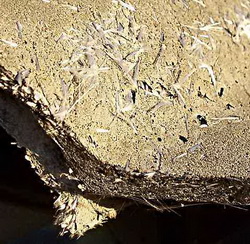It is of critical importance that the proper safety rules are taken into consideration while undergoing an asbestos removal process. If you are hiring a licensed contractor make sure you check their credentials on the web or give them a call in order to ask any questions or inquiries that you may have. An experienced licensed contractor should have plenty of experience in successfully removing asbestos and should also provide the safe removal and disposal of the material. Below is the step by step process that needs to be considered to remove and dispose asbestos containing materials.

Steps of Preparation
Before the actual removal begins the workers must first seal the affected region and make it suitable for containment of the material. This can vary depending on the location of the affected area for example the containment area might be the whole kitchen if the workers are going to remove the kitchen tiles that has asbestos. Wherever the area is, it should be covered entirely with plastic sheets and secured with duct tape; there should be at least two layers of plastic sheets covering the floor. All appliances must be turned off and the tools that the workers will be using must be connected to an external power source because all electrical wires will be taped up. The entrance to the area should be air locked to prevent contamination.
Safety Measures While Working
Whenever the asbestos remover is ready to actually start removing the material they need to make sure they are completely protected. They must we wearing disposable and protective coveralls that also include booties and hood if possible, external rubber boots that are soft in order to avoid puncturing the plastic sheet, goggles that don't fog, rubber gloves, and a half-face respirator with HEPA cartridges for proper breathing. They must also have sufficient water and water sprinklers in order to keep wetting the material as they remove it. The water is used in order to prevent the asbestos fibers of becoming airborne and entering the respiratory system. Some have suggested adding detergent to the water to help soak the fibers.
Proper Disposal
When all asbestos materials have been removed they must be placed in plastic bags or sturdy containers in order to be taken to a designated landfill. Each city and state have designated landfills that accept asbestos and ACMs. Any ACM that is potentially friable has to remain wet to prevent it from becoming airborne. All material has to be bagged, zipped, and sealed properly with duct tape. The vehicle that will be used to transport the material must be marked in order for others to know what type of waste it's carrying. The bags and containers must be properly labeled as well. If the waste is not properly covered the landfill supervisor has the obligation to refuse the receipt of the waste and to report that the worksite has been exposed to asbestos. Depending on state's regulations there might be some paperwork to be filled out.
